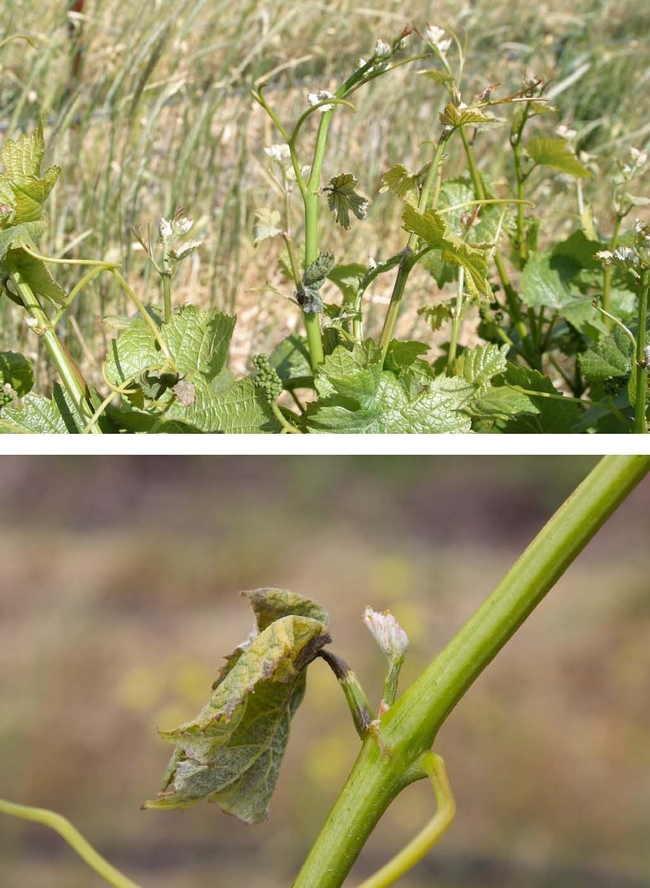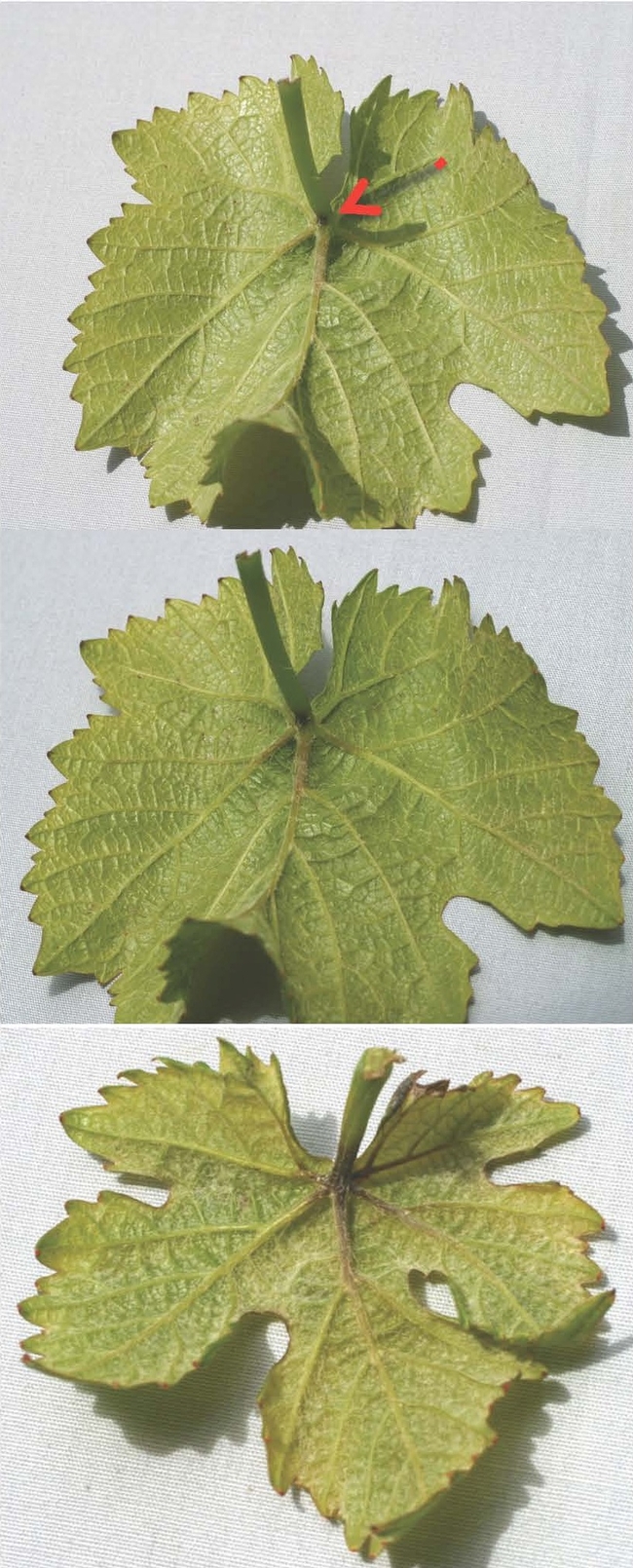Pinot leaf curl (PLC) is a physiological disorder that affects the Pinot cultivars. The symptoms are general seen in the coastal production areas during cool spring temperatures. During the cool spring temperatures of 2010 symptoms of this disorder were very common to Pinot vineyards. This week I have had several reports of this disorder showing in Pinot vineyards in the central coast.
Symptoms
Symptomatic leaves on elongating shoots curl downward across the middle of the leaf blade, perpendicular to the mid-vein. The angle of the downward bend is acute; the marginal tip of the center lobe may come into contact with the petiole. Mild symptoms involve only the blades; continued expansion of which results in a misshaped and reduced leaf size. A necrotic region is present on the mid-vein preventing further elongation. If the necrosis expands to include the petiole, the leaf will abscise from the shoot. Severe symptoms occur when necrosis involves the node at which a leaf abscised, killing the shoot distal to that point.
Symptoms appear somewhat similar to Botrytis shoot blight caused by Botrytis cinerea on foliage under cool, wet spring conditions. In the past samples of PLC affected tissue have been tested and no known foliar pathogens have been associated with the samples. Fungicide applications are unwarranted and will have no effect on subsequent PLC symptom development.
Research conducted by Rhonda Smith, UCCE Sonoma County and Doug Adams, Department of Viticulture and Enology UC Davis, have shown the level of putrescine were found to be elevated in symptomatic versus asymptomatic samples. Relative amino acid levels were less clearly aligned with symptoms; symptomatic blades were associated with elevated gluatamine levels in addition to elevated putrescine. Glutamine is the predominate amino acid in vine sap and the main amino transport form of reduced nitrogen in the vine. With the current information, pinot leaf curl is a physiological disorder most likely associated with elevated nitrogen levels. Elevated putrescine levels are toxic to plant tissue and are thought to be involved in symptom development in false potassium deficiency (“spring fever”) and early bunch stem necrosis. Pinot leaf curl may be an additional disorder associated with putrescine.
Source: Adapted from UCCE Sonoma County (http://cesonoma.ucanr.edu/viticulture717/Viticulture_Publications/)

